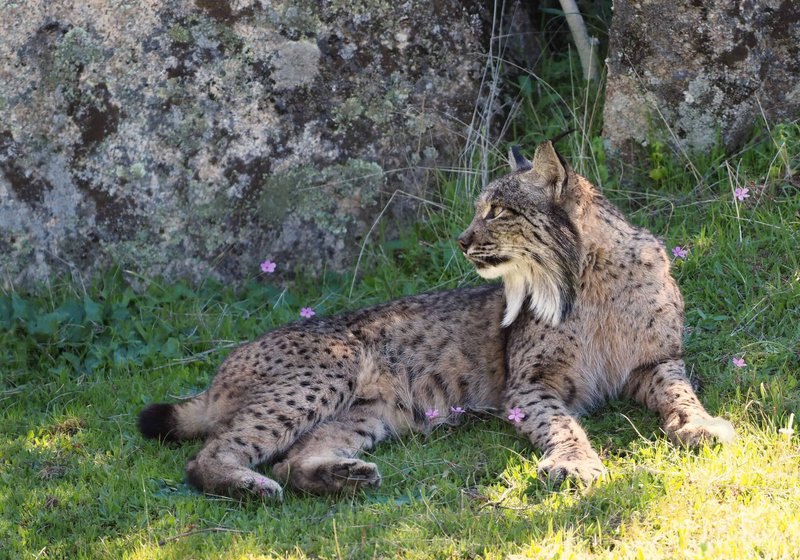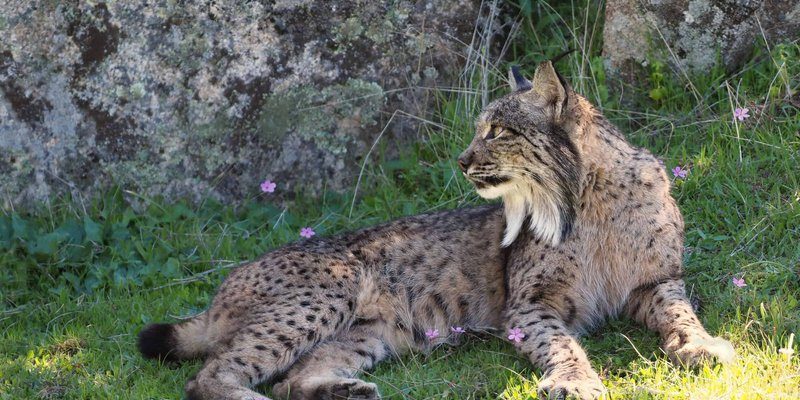
This magnificent animal once roamed widely across Europe, but its population has seen ups and downs, kind of like a rollercoaster. The Iberian lynx is now found primarily in a small region of Spain and Portugal, which raises questions about how it got there and why it’s important to conserve this beautiful cat. Let’s dive into its evolutionary history and discover how the Iberian lynx has navigated through time.
Understanding the Iberian Lynx: An Overview
The Iberian lynx, or *Lynx pardinus*, is particularly famous for its unique traits and behaviors. It’s often regarded as the most endangered feline species in the world. With its distinctive spotted coat and large ear tufts, it’s easy to see why so many people find it captivating.
These lynxes are primarily solitary, living in wooded areas or open scrublands where they hunt for their main prey, the European rabbit. Unfortunately, changes in habitat and rabbit populations have threatened their survival. Honestly, learning about their habitat is essential to understanding why they are in such a precarious position today.
You might be wondering how the Iberian lynx compares to other members of the lynx family. While they all share similar characteristics, each has adapted to its unique environment. The Iberian lynx is smaller than its Canadian and Eurasian relatives, which makes it a special representative of its region.
The Origins of the Iberian Lynx
The evolutionary journey of the Iberian lynx can be traced back around 8 million years. It’s believed that lynxes diverged from a common ancestor shared with other felines. Over time, they adapted to the unique landscapes of the Iberian Peninsula.
Fossil records indicate that their ancestors roamed a much broader area, including regions that now belong to Africa and parts of Europe. As the climate began to shift, the Iberian lynx adapted to its surroundings, developing features that suited its habitat. This evolution allowed them to thrive in various conditions, ranging from forests to grasslands.
As the last Ice Age came to an end, the environment and climate transformed significantly. This led to the fragmentation of their habitat, isolating populations and fostering the unique characteristics of the Iberian lynx. It’s almost like a game of evolution, where only the fittest survive the challenges of changing ecosystems and climates.
Decline and Conservation Efforts
Honestly, the story of the Iberian lynx takes a heartbreaking turn when we look at the last few decades. By the late 20th century, its population had plummeted alarmingly due to habitat destruction, hunting, and a decline in the rabbit population. This was a tough time for the species, as fewer lynxes meant less genetic diversity, which is vital for survival.
Conservationists recognized the urgent need to act, launching efforts to protect and conserve the Iberian lynx. These efforts included habitat restoration, breeding programs, and reintroduction initiatives. You might be surprised to know that several organizations have been pivotal in these endeavors, from local wildlife groups to international NGOs.
One of the most successful projects involved breeding Iberian lynxes in captivity and releasing them back into the wild. As a result, their numbers have started to recover, which is a real success story in the realm of wildlife conservation. Yet, maintaining this momentum is crucial, as their future still hangs in the balance.
The Role of the Iberian Lynx in Ecosystems
You might be wondering why the Iberian lynx matters beyond its striking appearance. Well, like many predators, its role in the ecosystem is vital. As a top predator, it helps maintain the balance between prey and vegetation, contributing to a healthy ecosystem.
By controlling rabbit populations, the Iberian lynx indirectly supports plant life in its habitat. Too many rabbits can lead to overgrazing, which impacts various species and the overall health of the ecosystem. Without the lynx, we might see an imbalance that could ripple through the food chain.
Additionally, the Iberian lynx serves as an indicator species. This means their health reflects the overall state of the environment. Keeping tabs on their well-being can give us insights into broader ecological issues. So, in a way, protecting the Iberian lynx also protects the intricate web of life it’s a part of.
Current Status and Future Outlook
Today, thanks to concerted conservation efforts, the Iberian lynx population has shown signs of recovery. There are now over 400 individuals, which is a significant improvement from the brink of extinction. However, it’s crucial to continue these efforts and address ongoing threats.
Issues like habitat loss due to urbanization and climate change still pose risks. Plus, as the world changes, ensuring genetic diversity remains a challenge. Conservationists are working tirelessly to find ways to integrate these lynxes into a safe and sustainable environment.
One promising avenue involves creating wildlife corridors that allow lynxes to move between habitats and breed with other populations. This can help strengthen genetic diversity, making the species more resilient to future challenges.
How You Can Help
You might be wondering, “What can I do to help the Iberian lynx?” There are several ways individuals can contribute to their conservation:
- Educate Yourself and Others: Understanding the importance of the Iberian lynx can inspire others to take action.
- Support Conservation Organizations: Donating to wildlife organizations that work directly with this species can make a big difference.
- Visit Protected Areas: Ecotourism can provide funds for conservation while raising awareness about the Iberian lynx.
Engaging in these actions not only supports the Iberian lynx but also helps maintain biodiversity in ecosystems globally.
Closing Thoughts
The story of the Iberian lynx is one of resilience and hope. Despite facing significant challenges, its gradual recovery shows what dedicated conservation efforts can achieve. By understanding its evolutionary history, we can appreciate the delicate balance of nature and the importance of protecting our wildlife. As we learn more about these magnificent cats, we also deepen our connection to the world around us, reminding ourselves that every small action counts in the fight for conservation. So, let’s keep cheering for the Iberian lynx and do our part to ensure its survival for generations to come!

